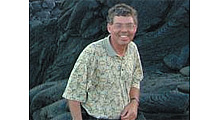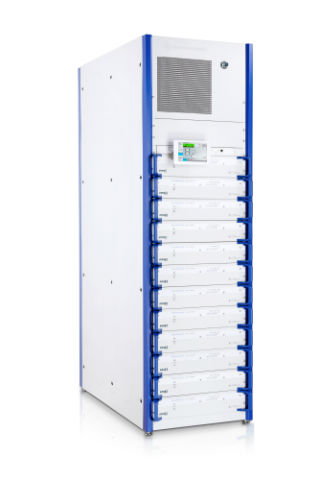A Look at OFDM Implementation

Doug Lung
Over the last two months I’ve explained how COFDM transmission works and provided some practical examples showing how implementing a COFDM-based standard such as DVB-T2 would give broadcasters the flexibility to trade off data rate for improved coverage (lower C/N required) or give up some coverage (higher C/N required) by using higher order modulation and less robust coding to achieve much higher data rates than those possible with the current ATSC A/53 8-VSB standard. This month I’ll look at what it will take to convert an ATSC transmission site to COFDM.
Transitioning to a new digital transmission standard isn’t as difficult as changing channels. Since ATSC has just started work on ATSC 3.0, I don’t know exactly what a new COFDM transmission standard for the U.S. might look like, but as I did last month I’ll use DVB-T2 parameters. A final standard may include additional features, such as MIMO that will add complexity, but DVB-T2 is a good place to start.
EXCITER OR FIRMWARE UPGRADE?
A change to COFDM will likely require a new exciter, although it is possible some newer exciters are flexible enough to handle COFDM with a firmware upgrade. As explained in Part 1 of this series, a multicarrier transmission system will use more of the allotted bandwidth than a single carrier system. For a 6 MHz channel, an 8-VSB signal occupies 5.39 MHz while a COFDM signal with 8K FFT will use 5.71 MHz. Solid-state transmitters and IOT amplifiers can handle this small increase in bandwidth. In most cases, the IOT won’t even need to be re-tuned. However, the 8-VSB mask filter will need to be replaced, or, at a minimum, re-tuned, to handle the wider bandwidth while still providing sufficient protection to adjacent channels. Major RF filter manufacturers have filters that can meet the bandwidth and adjacent channel protection requirements.
One of the benefits of a single carrier system like 8-VSB is that it has a lower peak-to-average power ratio than a multicarrier system like COFDM. While this has been cited as a major disadvantage for COFDM, in practice, the higher COFDM peak-to-average ratio does not appear to be as much of a problem as originally thought. The actual impact can be found looking at the data sheets from manufacturers building transmitters that support both 8-VSB and COFDM. The popular Thomson Paragon MSDC-IOT transmitter is rated at 25 kW for 8-VSB and 20 kW for COFDM. The power differences for the new Rohde and Schwarz THU9 series solid-state transmitter are similar. For example, a 10 amplifier THU9 in a non-Doherty configuration provides 15 kW with ATSC 8-VSB and 12.5 kW for COFDM. If the Doherty configuration is used, the power output is specified at 11.3 kW for both modulation types—no difference.
The dB difference in transmitter power between ATSC and COFDM is 1 dB for the MSDC-IOT and about 0.8 dB for the solid-state transmitter. This isn’t significant! Many stations may have enough headroom in their current transmitters to make up the difference.
The higher peak power with COFDM results in higher peak voltages, which could lead to voltage breakdown in transmission lines or antennas. The problem is more likely to appear in antennas operating close to their input power limit, such as low-gain slot antennas with elliptical or circular polarization generating high effective radiated powers or broadband panel antennas serving multiple stations.
Rohde & Schwarz THU9 series solid-state transmitter

TRANSITIONING FROM 8-VSB TO COFDM
If broadcasters are permitted to switch to a COFDM transmission system at some point in the future, it is likely there will be a period of time when both ATSC and 8VSB signals co-exist. I found no data on adjacent channel interference with DVB-T2 6 MHz channels. EBU TECH 3348, “Frequency and Network Planning Aspects of DVB-T2,” Table 3.4 shows the measured protection ratios between 8 MHz wide channels. The 90th percentile protection ratio for N+1 is -31 dB and -29 dB for N-1. This is a bit better than OET-69 interference ratios for adjacent 6 MHz ATSC signals. It shouldn’t be too difficult to do some laboratory testing on a sample of ATSC receivers to see if the current ATSC protection ratios will apply to adjacent COFDM signal. While I think they will, this needs to be confirmed.
While the transition from 8-VSB to COFDM isn’t trivial for station engineers, the steps are clearly defined. The most difficult part is likely to be changing the mask filter. Switching over-the-air viewers from 8-VSB to COFDM will be more challenging, but this too may not be a difficult as it first appears. Over-the-air TV to IP network devices like Simple TV, the new Boxee, and Hauppauge’s Broadway offer an alternative to converter boxes. Devices similar to these with the ability to receive COFDM over-the-air signals could provide IP streams to big screen TVs using an existing IP connector on the TV or via WiFi (perhaps through an existing home network) to multiple small screens—tablets and smartphones—that don’t have their own over-the-air TV tuner.
I’ll have more on this in future columns. I’m interested in your ideas for how to help over-the-air viewers make the move to next generation TV broadcasting. Email me at dlung@transmitter.com.
Get the TV Tech Newsletter
The professional video industry's #1 source for news, trends and product and tech information. Sign up below.

Doug Lung is one of America's foremost authorities on broadcast RF technology. As vice president of Broadcast Technology for NBCUniversal Local, H. Douglas Lung leads NBC and Telemundo-owned stations’ RF and transmission affairs, including microwave, radars, satellite uplinks, and FCC technical filings. Beginning his career in 1976 at KSCI in Los Angeles, Lung has nearly 50 years of experience in broadcast television engineering. Beginning in 1985, he led the engineering department for what was to become the Telemundo network and station group, assisting in the design, construction and installation of the company’s broadcast and cable facilities. Other projects include work on the launch of Hawaii’s first UHF TV station, the rollout and testing of the ATSC mobile-handheld standard, and software development related to the incentive auction TV spectrum repack. A longtime columnist for TV Technology, Doug is also a regular contributor to IEEE Broadcast Technology. He is the recipient of the 2023 NAB Television Engineering Award. He also received a Tech Leadership Award from TV Tech publisher Future plc in 2021 and is a member of the IEEE Broadcast Technology Society and the Society of Broadcast Engineers.
